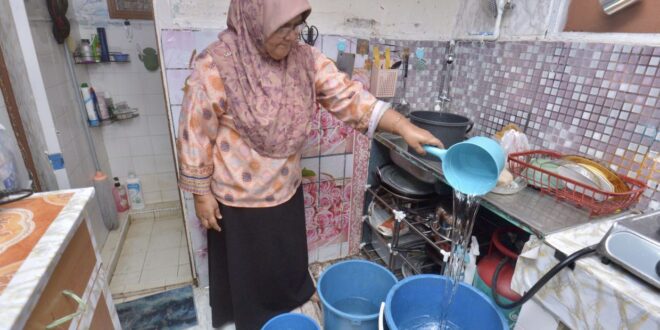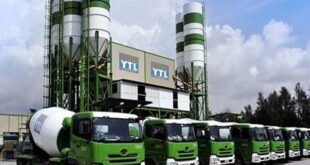THE recent three-day water disruption in the Klang Valley from June 5 to June 7 was a scheduled cut. But this did not make life any easier for the people who heavily depend on water, especially for running their businesses.
These water disruptions occur so often that Malaysians, although dreading it, have learnt to adapt to the situation.
2020 was known as the year of the Klang Valley water cuts due to the frequency at which the cuts occurred.
Since then, water disruptions may have lessened, but the situation has not improved drastically.
Bracing for water cuts by filling up buckets of water can be a very arduous task for the elderly and those living in high-rise apartments.
Why is it that we just accept that water cuts are normal?
Malaysia, being a developing nation, should make water cuts a rare occurrence.
Shouldn’t the government give top priority to ensure that we have a robust and efficient water system that will not need dams to be shut for maintenance?
As it is, National Water Services Commission (SPAN) chairman Charles Santiago has been highlighting the water cause for many years.
He has been calling for the water sector to be made a national security priority to strengthen the country’s water resources with a minimum of RM10bil to upgrade our water infrastructure every year for the next few years.
Recently, the government announced a RM25bil allocation for targeted incentives to push Malaysia to the top in the semiconductor industry.
Granted that such incentives would lure big players to set up their facilities here but if our water supply is not consistent or sufficient, they will have second thoughts.
Any halt in operations would cost them billions of ringgit and, as such, efforts to bring them to the country will only be in vain.
Unfortunately, zero water disruption is impossible, according to Datuk Seri Dr Zaini Ujang, former secretary general of the now-reshuffled Energy, Green Technology and Water Ministry.
He says shutting down the plants on a scheduled basis every five years cannot be avoided as there is a need to fix, replace, or upgrade equipment, as well as flush pipes.
But with technology, water cuts can definitely be prevented and minimised.
According to Johnson Tan, vice president and head of sales, digital industries, at Siemens Malaysia, to prevent and minimise water cuts, we need to have a clear view on consumption and this requires digitalisation and data analytics.
He explains that digitalisation of the water treatment and water distribution networks allows greater transparency in detection of anomalies in consumption.
With such data, water operators will be able to monitor the plants in real-time and resolve issues in a timely manner.
He cites an example of Siemens’ comprehensive suite of solutions for the water industry — SIWA — that can help to locate burst pipes and detect leaks in real time, reducing water loss and cost-optimising pump operation.
Siemens also has a solution that allows water utilities to use valuable data collected from the flowmeters to quickly identify leaks or consumption anomalies, avoiding potential property damages and high expenses.
With such solutions, operators can optimise their processes and operations, and prevent as well as minimise water cuts.
Thus, it is pertinent that the government allocates funds to acquire the available technology as the cost of water disruptions to businesses is huge, leaving a negative impact on the economy.
For example, the 96-hour water cut in Penang caused billions of ringgit in losses for manufacturers in January.
Scheduled water cuts may not be frequent but the main culprit that causes unexpected water cuts is pollution. There have been many instances of disruptions due to water supply contamination.
This needs to be addressed, perhaps with stiffer penalties imposed on the culprits as the cost of the disruption could run into billions of ringgit!
The Klang Valley also suffers from frequent disruptions due to Selangor’s inadequate water supply and distribution system, on account of the state’s rapid development and population growth.
Former minister Zaini points out that water disruptions are frequent in Selangor because the state has very few treated water reserves. This leaves it vulnerable with practically no excess water in the event of an emergency such as a burst main pipe.
The water reserve margin in Selangor in 2017 was at zero percent, which was identified as among the main factors behind the state’s water problems. Thankfully, the state’s reserve margin has improved to 12.02% in 2022.
But more needs to be done to ensure adequate supply to support the burgeoning economy in the state and its surrounding areas.
Meanwhile, Johor Bahru City Council Mayor Datuk Mohd Noorazam Osman warns of potential water and power supply issues in the state as more and more tech giants set up resource-guzzling data centres.
While it is important to bring in foreign direct investment (FDI) to the country, this should not be at the expense of depriving our own people of water.
Plus, if we do not get our act together and properly ensure our water supply well into the future, including managing the effects of climate change, the FDI would dry up with billions of ringgit going to our neighbours and elsewhere instead.
This article first appeared in Star Biz7 weekly edition.
 BeritaKini.biz Berita Viral Terkini di Malaysia
BeritaKini.biz Berita Viral Terkini di Malaysia




